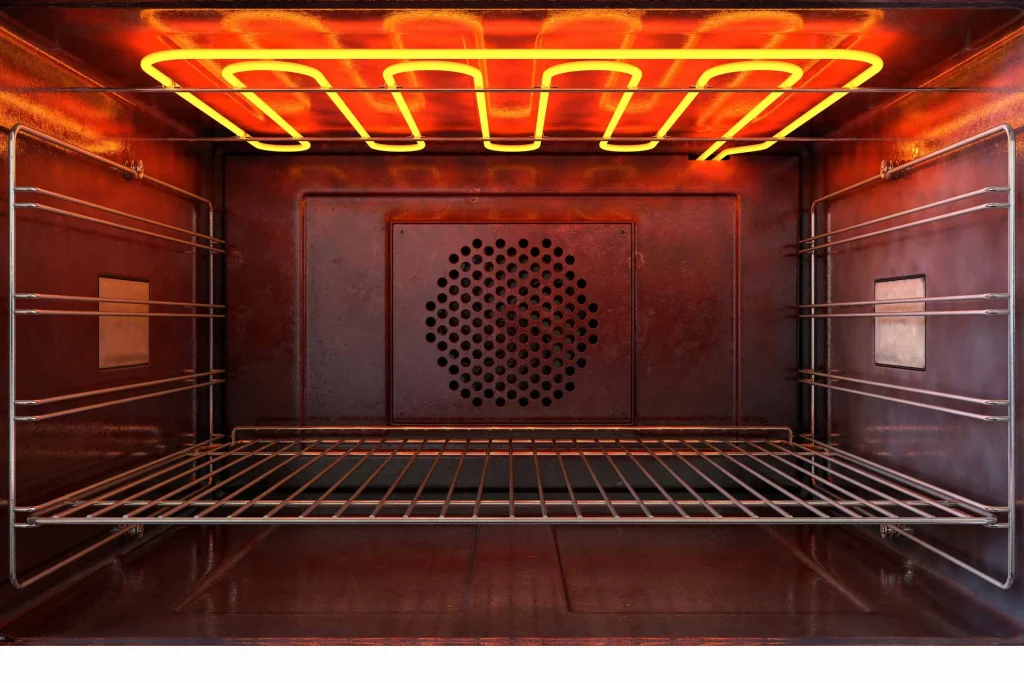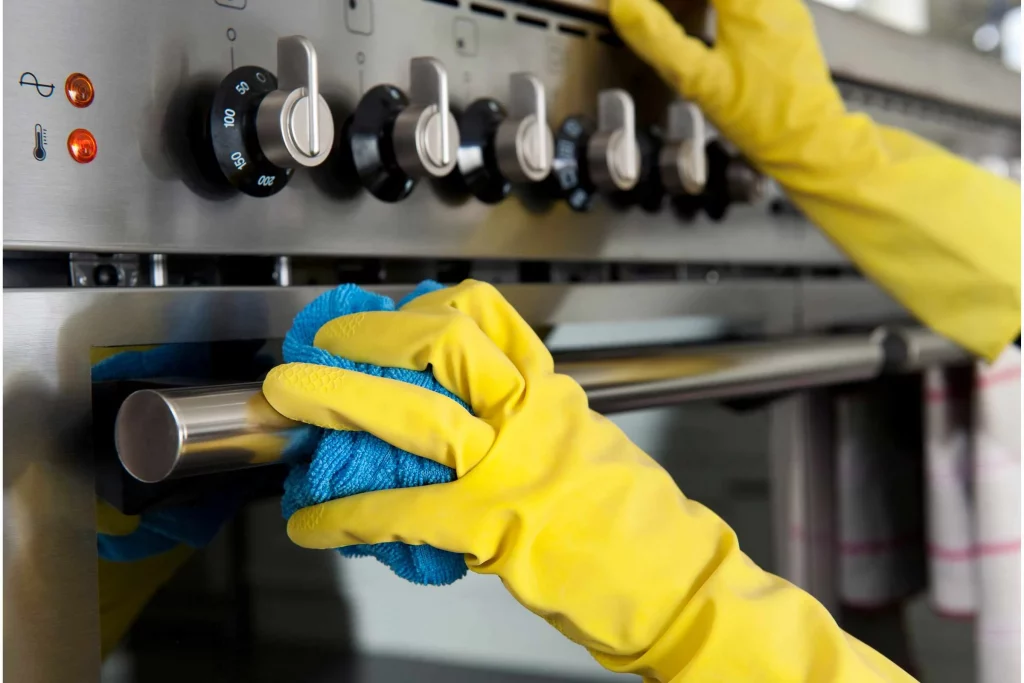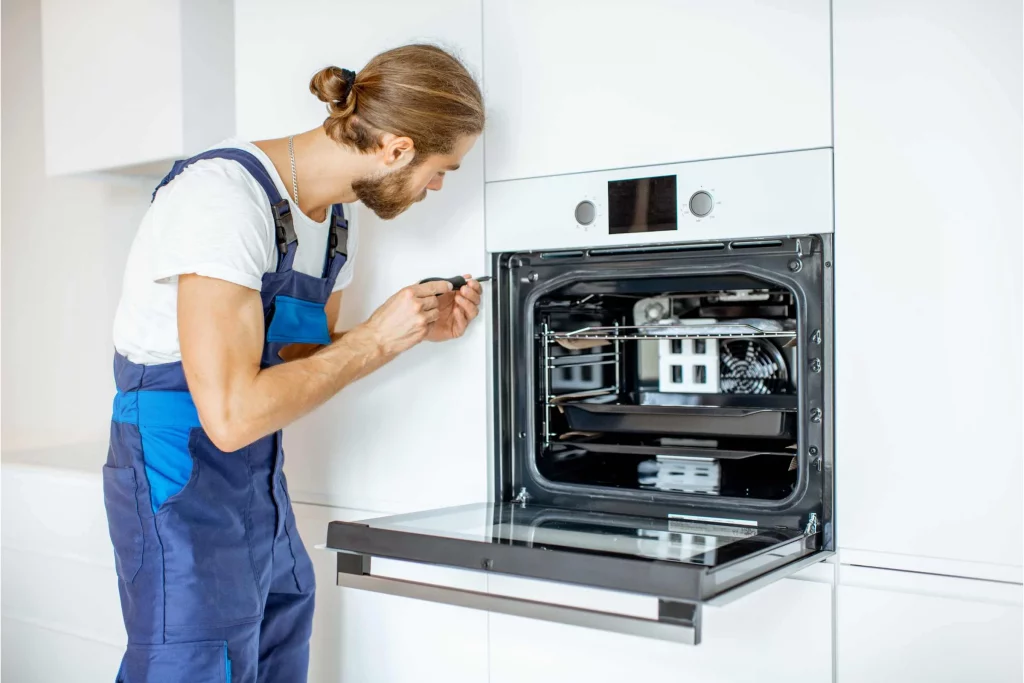Cleaning Tips
Published On
Self-Cleaning Ovens: A Complete Guide to Effortless Maintenance
Written By
Every day, humans find easier ways of doing things. We are always on the lookout for ways to save time, money, and energy. And since a whopping 40.5% of Americans list cleaning the oven as their worst chore, it’s no surprise that self-cleaning ovens have joined the multitude of labor-saving devices on the market.
Self-cleaning ovens are great for effortless oven maintenance. They have completely revolutionized oven cleaning. However, they can be quite dangerous if they aren't handled properly. If you are thinking of getting a self-cleaning oven or have one already and need a guide on how to use it, this article is for you.
Related: How to Clean Your Oven
Understanding Self-Cleaning Technology

How Self-Cleaning Ovens Work
Contrary to what you might think, this oven’s technology is mundane and easy to understand. It uses high temperature (about 900°F) or steam (about 400°F) to remove any food residue or leftovers from baking and roasting. The high-temperature option is typically used when there are more food spills to clean and at intervals of 4-6 months. On the other hand, the steam cycle is for lighter cleaning between heavy-duty ones.
Self-cleaning ovens can be powered by gas or electricity. The ovens are typically coated with heat and acid-resistant porcelain enamel. They are also well-insulated to reduce the possibility of a fire. The high temperature incinerates food residue, turning it into ash that can be easily wiped off with a wet cloth afterward. On the other hand, the steam cycle loosens any gunk, allowing it to be wiped away as well.
Benefits of Self-Cleaning Ovens
Using the self-cleaning option has a ton of benefits.
- Convenience and Time Savings: This is the primary benefit of a self-cleaning oven. Traditional oven cleaning is time-consuming and labor-intensive. A self-cleaning oven saves you a lot of time and effort.
- Reduced Chemical Use: After prolonged use, the grease and other gunk in your oven are tough to cut through. Cleaning your oven manually, therefore, requires you to use harsh chemicals. A self-cleaning oven simply uses heat to get the job done, eliminating the need for chemical cleaners.
- Thorough Cleaning: Self-cleaning ovens reach incredibly high temperatures, effectively cutting through any gunk in your oven. This leaves your oven looking spotless afterward. Those elevated temperatures are also great for killing any bacteria or germs that might be in your oven.
Dangers of Self-Cleaning Ovens

It's not all rosy with these ovens. Hence, we will outline their potential dangers so you can decide if you would still want to run the self-clean feature or not.
- High Temperatures: Self-cleaning ovens use extremely high temperatures to burn off food residue and grease. These temperatures can pose several risks like:
- Burns: Accidental contact with the hot surfaces during the cleaning cycle can result in severe burns to the skin.
- Fire Hazard: The intense heat can ignite any leftover food particles or grease, leading to a potential fire hazard within the oven.
- Release of Toxic Fumes: During the self-cleaning process, food remnants are turned into ash, which may release harmful fumes, such as carbon monoxide, into the air. These fumes can pose health risks if inhaled, particularly to individuals with respiratory issues or sensitivities.
- Potential for Oven Damage: The extreme heat generated during self-cleaning can cause damage to certain components of the oven, including:
- Seals: The high temperatures may degrade the door seals over time, leading to poor oven insulation and potential energy inefficiency.
- Electronic Components: Excessive heat exposure can damage sensitive electronic parts of the oven, such as control panels or wiring, potentially leading to malfunctions or even electrical hazards.
- Risk of Kitchen Contamination: The ash produced during the self-cleaning process can spread throughout the oven cavity and even escape into the kitchen environment. This ash may contain harmful substances or allergens that can contaminate food prepared in the oven or the surrounding surfaces.
Different Types of Self-Cleaning Ovens
There are two types of self-cleaning ovens: catalytic and pyrolytic.
- Catalytic Self-Cleaning Ovens: Catalytic ovens contain special catalytic liners within the oven that are fast-absorbing to remove grease and grime. They don’t need to reach extremely high temperatures as they typically get to about 392°F to burn off food residue and grease. This is then wiped off afterward with a wet cloth. The post-cycle wipe-down requires more effort than in the pyrolytic oven. A typical cycle lasts for about 30 minutes.
- Pyrolytic Self-cleaning Oven: This oven reaches exceptionally high temperatures of about 800°F or more. Grease and food residue are entirely burnt off and turned into ash, then swept away. It is more expensive than the catalytic self-cleaning oven, and a typical cycle lasts hours.
Steps in Using a Self-Cleaning Oven

1. Clear the Oven Interior
To use and properly prepare your self-cleaning oven, follow the instructions in your owner’s manual. Clear the oven interior to prevent any obstructions and damage too. Remove any pots, pans or aluminum foil and wipe away any loose debris or spills. Uncover the oven vents and switch on the hood's exhaust fans to eliminate any fumes and unpleasant odors. Don’t forget to ensure that your kitchen is well-ventilated.
2. Preclean Your Oven
This might sound contrary to the whole “self-cleaning” idea. But you need to understand that on a good day, any leftover food or loose debris in your oven during the self-cleaning cycle will lead to excess smoke in your home. On a bad day, it could actually start a fire. So yes, please do a simple wipe-down with a damp cloth to get rid of loose food debris.
3. Clean the Oven Window
Unlike the coating on the oven body, stains don’t just burn off the window's glass. So make sure to clean any residue left on it to prevent streaks and burn marks that would be difficult to remove.
4. Initiate The Self-Cleaning Cycle
Select a self-cleaning option depending on the level of dirt and spills you’re dealing with. So, the steam option is for light clean, and the high-temperature option is for heavy-duty deep cleaning.
- Properly shut the oven door and start the cleaning cycle.
- Ensure that the exhaust fans are turned on and that your kitchen is well-ventilated in order to get rid of smoke and odors.
- Wipe down the oven with a wet cloth when the cycle is over, and the oven has cooled down completely.
5. Handling Residual Ash
The residual ash cleaning after the cycle is quite easy. This is because the oven walls have a special enamel coating, making it easy to wipe clean with a wet cloth. If any scrubbing is still required, use mild non-abrasive cleaners such as dish soap and water or vinegar diluted in water.
6. Final Touches
After wiping away the ash, dilute some white vinegar in some water, add it to a spray bottle, and use it to wipe down the oven once again with a microfiber cloth. Clean the oven interior, door, glass, and exterior. You could do this with lemons instead for a heavenly citrus scent. Never clean with chemicals as it can damage the fire-proof coating.
NOTE: If possible, it is important to keep children and pets away from the oven and kitchen. This is because the high temperature from the self-clean cycle could result in burns if they are not supervised. Also, endeavor not to leave your home when the oven is running a self-cleaning cycle. You need to be available in case anything goes south.
Duration and Energy Consumption
The duration of the self-cleaning cycle depends on the level of soil present. Some models allow you to choose different cleaning settings, from light to moderate to heavy. On average, the high-temperature option lasts for about 1.5-3 hours. It can extend up to 6 hours on some models. The steam cycle is generally shorter and lasts for an hour or less.
Self-cleaning ovens require a lot of energy to work. On average, a 150-minute self-cleaning cycle can use more than 3 kWh of electricity.
Common Issues And Troubleshooting

Like every appliance, your self-cleaning oven could develop issues with time. Here are some common issues with self-cleaning ovens and troubleshooting tips.
- Oven won’t start the self-cleaning cycle: The first thing to do is to check your owner’s manual. Some ovens need to be latched in a specific way for the door to lock and begin the cycle. If, however, the door is properly latched and the cycle still won’t start, there could be another problem. Contact a qualified technician.
- The oven creates a lot of smoke: This is most likely because of excess grease and food residue within the oven at any point. You can easily solve this by wiping your oven down after each use. Quickly wipe down your oven before any self-cleaning cycle to get rid of excess food particles as well.
- The oven takes a really long time to clean: When your oven is extremely dirty and accumulates build-up on the heating elements, this tends to happen. Remove the build-up before the cleaning cycle starts. This could also be caused by a faulty thermostat in which case, you’ll have to call a qualified technician.
- The oven doesn’t get hot enough: This is caused by a faulty thermostat or control panel. Call a qualified technician to service your oven.
- The oven door won’t open: For safety reasons, most self-cleaning ovens have a design that doesnt let their doors open until it is properly cooled down. Wait for an hour or more. If the oven door still refuses to open, there might be a problem with the latch or control panel. In that case, call a qualified technician to service your oven.
A lot of times, the key to troubleshooting self-cleaning ovens lies within the owner’s manual. If you can’t seem to tell what’s wrong, call a qualified technician.
In Summary…
Understanding your self-cleaning oven, as well as employing the tips in this article, will give you effortless maintenance mastery of your oven. Now you can trade those long ours scraping unk out of your oven for some well-deserved personal time.
Don’t forget to share this article with your loved ones as well as share oven cleaning tips that you might have with us. Till next time😉
Clean Tu Casa is the team to call for any cleaning service in Atlanta. We offer Atlanta residential cleaning services and corporate cleaning services. We provide commercial cleaning services in Marietta, Buckhead, and Brookhaven areas. Whether you want a one-time, weekly, bi-weekly, or monthly cleaning, simply reach out to us for your free quote today.
